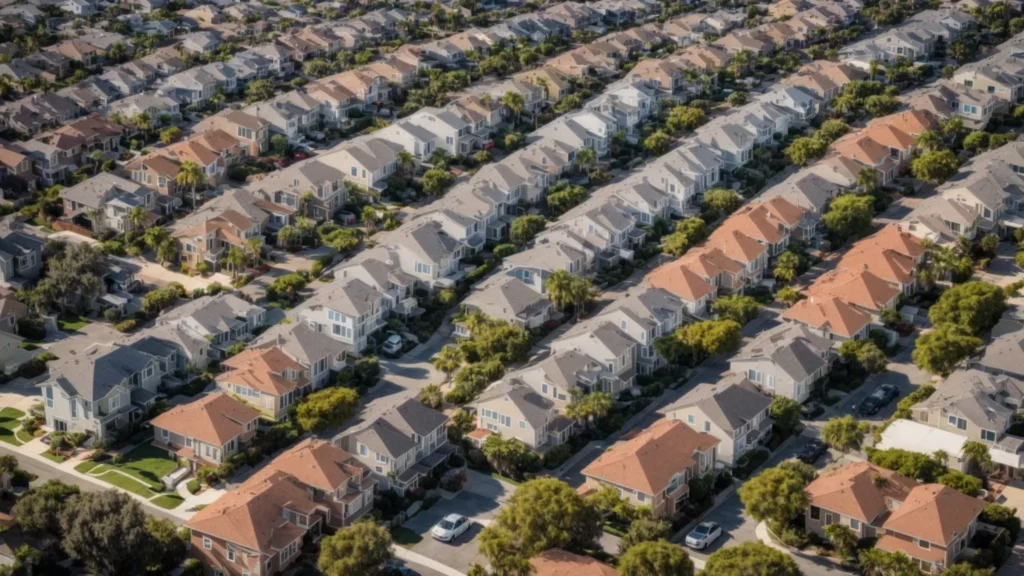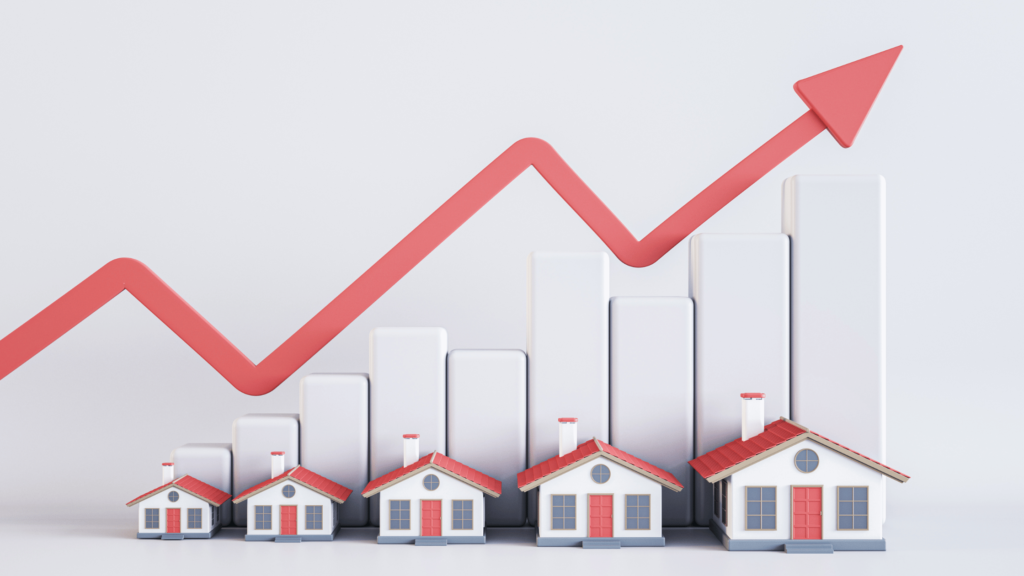Long Beach’s real estate landscape has undergone significant changes in recent years, mirroring trends seen across California‘s property market. As home prices soar and rental dynamics shift, this coastal city finds itself at a crossroads, balancing growth with affordability concerns. While not as pricey as neighboring San Diego, Long Beach’s housing market continues to attract attention from investors and homebuyers alike. In this article, we’ll explore the current state of Long Beach housing, examining key trends and future projections that shape this dynamic market.
Key Takeaways
- Long Beach’s housing market has seen significant price increases due to high demand and limited inventory
- New housing developments are reshaping the city’s landscape and may impact future pricing trends
- Buyer preferences have shifted towards homes with dedicated office spaces and outdoor areas post-pandemic
- There’s a growing interest in suburban properties, mirroring trends seen in other major cities
- The rental market has experienced steady growth, attracting investors and impacting housing choices
Analyzing the Rise in Long Beach Home Prices
Long Beach’s housing market has experienced significant price increases, catching the attention of both buyers and sellers. Real estate agents have observed a surge in demand, coupled with limited inventory, creating a competitive environment. The city’s robust economy and desirable coastal location contribute to this upward trend. As prices climb, some residents find themselves priced out of homeownership, turning to renting as an alternative. To understand the current market dynamics, you must examine the factors driving up prices and compare them to historical levels.
The Factors Driving Up the Market
Multiple factors contribute to Long Beach’s soaring home prices. Low interest rates have fueled demand, while a shortage of available properties listed on the multiple listing service has created fierce competition among buyers. The city’s robust job market and desirable coastal location further drive up prices, even as concerns about a potential recession linger. Additionally, rising construction costs and stricter building regulations have limited new housing supply, exacerbating the inventory shortage. These factors combine to create a challenging market for buyers, who often face bidding wars and the need for larger down payments, as well as higher home insurance premiums and limited refinancing options.
- Low interest rates driving demand
- Limited housing inventory
- Strong local job market
- Desirable coastal location
- Rising construction costs
- Strict building regulations
Comparing Past and Current Price Levels
You’ll notice a stark contrast when comparing Long Beach’s past and current housing prices. Data shows median list prices have surged over the past decade, outpacing wage growth and inflation. This trend reflects heightened demand, low interest rates, and limited inventory. While some areas, like Virginia Village, have seen more moderate increases, coastal neighborhoods have experienced the sharpest price jumps. Consider these key factors driving the market:
- Historical low interest rates
- Increased buyer demand
- Limited housing inventory
- Desirable coastal location
- Strong local economy
Shifts in the Long Beach Rental Market
You’ll find the Long Beach rental market has undergone significant shifts, mirroring trends seen in larger markets like San Francisco. As home prices climb, more residents turn to renting, driving up demand and costs. Interest rates impact both buyers and renters, with higher mortgage rates pushing some potential homeowners into the rental pool. The median rent has steadily increased, though not as sharply as home prices. Estate agents report heightened competition for rentals in desirable neighborhoods, with some tenants offering above-asking prices to secure properties. Understanding these dynamics is crucial for navigating the current housing landscape in Long Beach.
Tracking Changes in Rental Costs Over Time
You’ll find that tracking rental costs in Long Beach reveals a steady upward trend, mirroring patterns seen in other coastal cities like Los Angeles. While not as extreme as markets in Connecticut or North Carolina, Long Beach has experienced significant rent increases over the past decade. The National Association of Realtors reports that this trend has caught the attention of investors, who view Long Beach rentals as a potentially lucrative investment opportunity. To understand the full picture of rental cost changes, consider these key factors:
- Annual percentage increases in median rent
- Comparison to nearby markets
- Impact of new luxury developments on overall rental prices
- Shifts in rental demand across different neighborhoods
- Influence of local economic factors on rental costs
Understanding Demand in Key Neighborhoods
You’ll find that demand varies significantly across Long Beach neighborhoods, with factors like proximity to amenities, schools, and transit influencing popularity. Unlike Miami or Seattle, Long Beach’s rental market hasn’t seen extreme spikes in demand, but certain areas remain highly sought-after. The cost of living, while lower than some coastal cities, still impacts renters’ choices, with some weighing the tax implications of renting versus buying. As you explore different neighborhoods, consider the risk-reward balance of investing in up-and-coming areas versus established locations.
Impact of New Housing Developments on Local Dynamics
You’re witnessing a transformation in Long Beach’s housing landscape as new developments reshape local dynamics. Unlike the slower-paced growth seen in South Carolina or New Mexico, Long Beach’s construction boom rivals that of Texas in its intensity. Finance experts predict these projects will significantly impact housing availability and pricing. As you navigate this evolving market, you’ll need to consider how these new developments might affect your investment strategies or home-buying plans. Let’s examine the major projects underway and their potential effects on the local housing ecosystem.
Overview of Major Projects Underway
You’ll find Long Beach’s skyline changing rapidly with several major housing projects underway. Unlike the slower pace of development in New Jersey or Illinois, Long Beach’s construction boom rivals that of Denver or Dallas in its intensity. These projects range from high-rise luxury apartments in downtown to mixed-use developments along the waterfront, each promising to reshape the city’s housing landscape in ways reminiscent of recent transformations in Washington state.
Predicted Effects on Housing Availability
You’ll find that new housing developments in Long Beach will likely increase overall availability, potentially easing the pressure on the market. Unlike the aftermath of a stock market crash, where real estate investing often becomes more attractive, these projects may stabilize prices by meeting pent-up demand. The impact could resemble what Houston experienced with its building boom, rather than the tighter markets seen in Arizona, potentially making home loans more accessible to a broader range of buyers.
Trends in Homebuyer Preferences Post-Pandemic
You’ll notice significant shifts in homebuyer preferences in Long Beach since the pandemic, mirroring trends seen in cities like San Antonio and Philadelphia. Unlike the pre-pandemic focus on urban condominiums, buyers now prioritize features that cater to remote work and outdoor living. This change has reshaped the market, affecting everything from property values to the cost of renovations. As you explore Long Beach’s evolving real estate landscape, you’ll see a growing interest in suburban areas, contrasting with the previous emphasis on urban living. These trends have prompted developers and real estate professionals to adapt their strategies, much like their counterparts in San Francisco and other major cities.
Demand for Home Offices and Outdoor Spaces
You’ll notice a surge in demand for homes with dedicated office spaces and outdoor areas in Long Beach, mirroring trends seen in Baltimore and Missouri. Unlike the foreclosure-driven market shifts in Oklahoma, this change stems from evolving work-life preferences. Brokers report buyers prioritizing properties with home offices, spacious yards, and outdoor living spaces, often willing to compromise on other features to secure these amenities.
Shift Towards Suburban vs. Urban Living Areas
You’ll observe a notable shift in Long Beach homebuyer preferences towards suburban areas, echoing trends seen in Nevada and Michigan. Unlike the urban-centric focus prevalent in Tennessee‘s major cities, Long Beach buyers increasingly seek spacious properties in quieter neighborhoods. This trend mirrors the movement seen in Kansas, where information on suburban home sales has skyrocketed. The desire for more square footage, larger yards, and a sense of community has driven this shift, prompting real estate professionals to adapt their strategies accordingly.
- Increased interest in suburban properties
- Demand for larger homes and yards
- Shift away from urban-centric living
- Emphasis on community-oriented neighborhoods
- Adaptation of real estate strategies to meet new preferences
Conclusion
The Long Beach housing market continues to evolve rapidly, driven by factors such as low interest rates, limited inventory, and changing buyer preferences. New developments promise to reshape the city’s housing landscape, potentially easing market pressures and increasing availability. Post-pandemic trends have shifted focus towards suburban areas and homes with dedicated office spaces and outdoor living areas. Understanding these dynamics remains crucial for buyers, sellers, and investors navigating Long Beach’s competitive real estate market.



